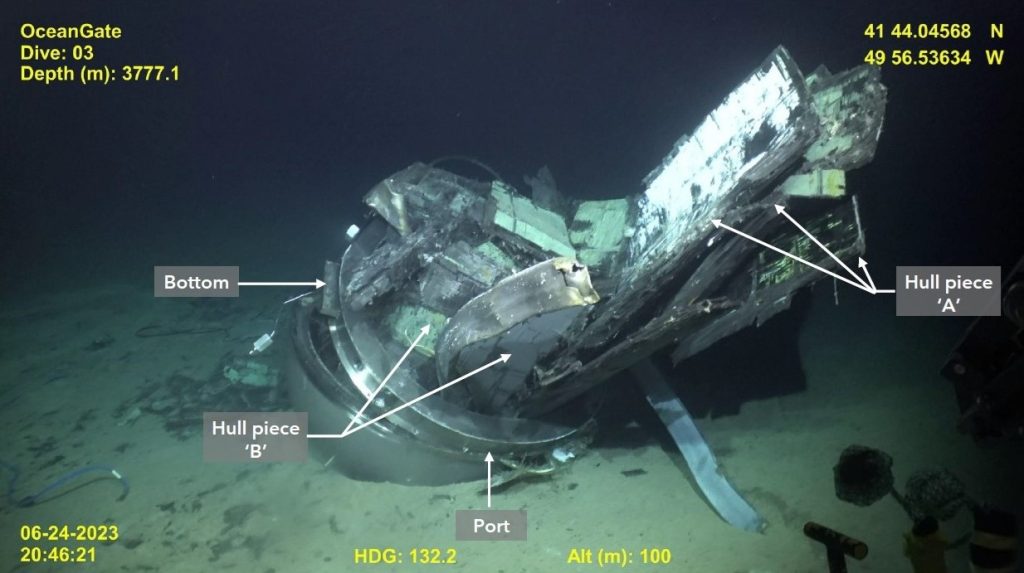Two reports by the National Transportation Safety Board revealed flaws in the carbon-fiber hull of OceanGate’s Titan submersible, as evidenced by debris found from the sub’s catastrophic implosion during a dive to the wreck of the Titanic. Although initially dismissed as not serious, a loud bang heard at the end of a dive was later linked to the sub’s failure, possibly due to weaknesses in the hull under extreme pressure. The findings were presented at a Coast Guard hearing by senior materials engineer Donald Kramer, who refrained from speculating on the specific cause of the sub’s demise.
The NTSB investigation, based on debris samples and carbon-fiber hull examinations, showed imperfections in the composite and adhesive joints of OceanGate’s hulls, particularly between the 1-inch layers. Anomalies such as waviness, wrinkles, porosity, and voids were discovered in the surplus pieces from the second hull of the Titan sub. The analysis also unveiled significant differences in strain readings in the hull before and after the loud bang, indicating a sudden shift in strain at a specific location. Acoustic sensor data revealed unusual spikes in activity and subsequent quieting of the hull during dives post-bang.
A separate report from the Coast Guard and NTSB will delve into the causes of the Titan tragedy and recommend regulatory changes to prevent similar incidents in the future. Concerns raised by William Kohnen and Bart Kemper at the hearing highlighted issues such as viewport specifications and engineering practices. Kohnen expressed dissatisfaction with the viewport provided for the sub, emphasizing the need for better quality components, while Kemper outlined potential failure modes involving the composite hull, bonding, and acrylic viewport of the sub.
Kramer emphasized ongoing tests and analysis, refraining from drawing causal connections between the hull imperfections, loud bang, and the sub’s implosion. Reports of OceanGate’s dismissal of significant strain changes in the hull and the company’s reluctance to undergo outside certification were highlighted during the testimony. Kemper suggested a limitation on crew size for experimental crafts, emphasizing the need for standardized safety measures, navigation aids, and emergency gear on submersibles. The debate underscored the need for industry-wide standards and regulations to ensure the safety of deep-sea exploration missions.
The investigation into the Titan sub implosion has brought to light critical issues surrounding hull integrity, design practices, and safety protocols in deep-sea exploration. The tragic loss of the sub and its crew has sparked a reevaluation of industry standards and regulatory requirements to prevent similar incidents in the future. The NTSB’s findings shed light on the importance of thorough testing, certification, and monitoring of submersible structures to ensure their viability under extreme conditions. The ongoing analysis and recommendations from the Coast Guard and NTSB will likely shape the future of deep-sea exploration and submersible technology.


